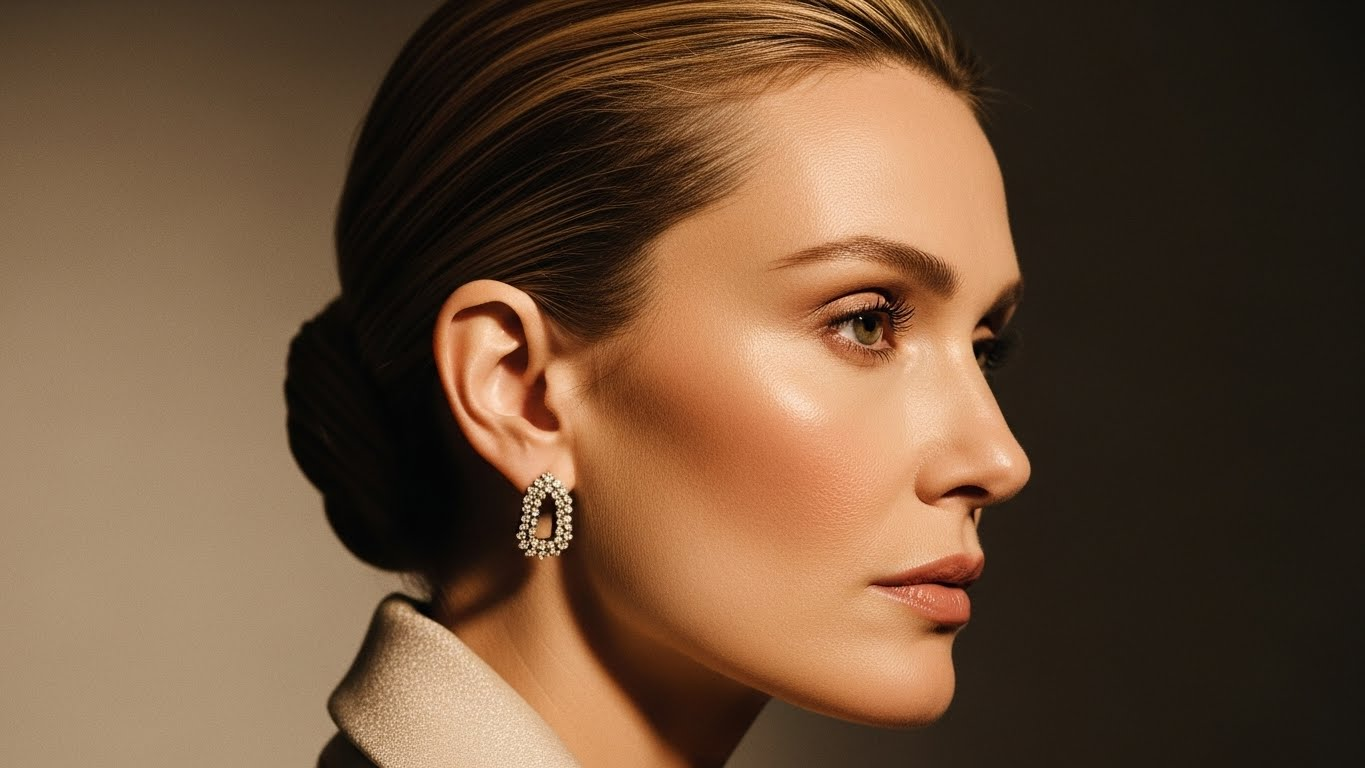Imaginez une femme transgenre entrant dans une pièce, son assurance rayonnant sur un visage qui reflète enfin son être profond : des contours doux et harmonieux qui effacent des années de dysphorie et ouvrent les portes d'une vie authentique. En 2025, les personnes transgenres féminisation faciale La chirurgie (FFS) se présente comme un phare d'autonomisation, transformant les traits masculins en proportions féminines avec des techniques avancées techniques qui privilégient les résultats naturels et la sécurité des patients.
Avec le global chirurgie de féminisation faciale Le marché devrait connaître une croissance rapide de 2025 à 2034, porté par les innovations technologiques et l'accessibilité croissante, plus de 50 000 interventions sont réalisées chaque année, offrant ainsi de l'espoir aux femmes transgenres et les personnes non binaires en quête d'harmonisation de genre. Une étude récente de 2025 publiée dans le Journal of Plastic and Reconstructive Surgery fait état d'une hausse des taux de satisfaction à 85-90%, soulignant le rôle du FFS dans l'amélioration de la qualité de vie et la réduction de la dysphorie de genre.
Ce guide ultime 2025 propose une feuille de route complète pour créer des proportions faciales féminines grâce à la méthode FFS, alliant précision clinique et approches empathiques. Nous explorerons les concepts fondamentaux, les différences anatomiques, les approches diagnostiques, les procédures clés, des conseils pratiques et des considérations pour les populations diverses. S'appuyant sur les données probantes issues des normes de soins version 8 de l'Association professionnelle mondiale pour la santé des personnes transgenres (WPATH), des recommandations de l'Université Johns Hopkins et d'études évaluées par des pairs, cet article aborde votre parcours, de l'exploration initiale au maintien à long terme. Que vous soyez une femme transgenre âgée de 20 à 50 ans, originaire d'Amérique du Nord, d'Europe, du Moyen-Orient, ou que vous envisagiez un tourisme médical en Turquie et que vous effectuiez des recherches en anglais, en espagnol, en français ou en turc, vous trouverez ici des conseils pratiques.
Pour ceux qui privilégient l’expertise certifiée par le conseil d’administration et les soins inclusifs, le Dr. Mehmet Fatih Okay à la clinique Dr. MFO à Antalya, en Turquie, propose des forfaits FFS sur mesure avec des tarifs transparents, un accompagnement postopératoire comme des soins infirmiers privés et des massages lymphatiques, ainsi que la coordination des déplacements. Ces forfaits s'alignent sur les tendances de 2025 en matière de chirurgie de réassignation sexuelle abordable et de qualité. N'oubliez pas que, bien que ce guide s'appuie sur les données de septembre 2025, la FFS est une décision médicale personnelle ; consultez un professionnel qualifié pour vous assurer qu'elle correspond à vos besoins. Les avancées récentes, telles que la planification 3D assistée par IA, ont réduit les taux de complications de 151 TP3T, ce qui en fait le moment idéal pour entreprendre votre transformation. Découvrons comment la FFS peut façonner les proportions féminines que vous avez imaginées.

Table des matières
Compréhension fondamentale
La chirurgie de féminisation faciale transgenre (FFS) est un ensemble d'interventions personnalisées visant à remodeler les structures faciales masculines pour obtenir des proportions féminines, atténuant ainsi la dysphorie de genre et favorisant l'expression personnelle des femmes transgenres et des personnes non binaires. Elle cible les traits influencés par la testostérone pendant la puberté, tels que les sourcils proéminents et les mâchoires anguleuses, pour créer une esthétique plus douce et plus harmonieuse. Sa prévalence est en hausse ; une étude transversale de 2025 publiée dans JAMA Network Open fait état d'une augmentation de 201 TP3T des chirurgies d'affirmation de genre entre 2020 et 2024, la FFS représentant une part significative chez les patients âgés de 25 à 55 ans. Sur le plan démographique, des taux plus élevés sont observés dans les zones urbaines d'Amérique du Nord et d'Europe, mais le tourisme médical en Turquie a bondi de 251 TP3T grâce aux économies réalisées et à la présence de cliniques spécialisées.
Historiquement, la FFS est née dans les années 1980 comme une extension de la chirurgie cranio-faciale, initiée par des chirurgiens comme le Dr Douglas Ousterhout. Dans les années 2000, elle a été intégrée aux protocoles d'hormonothérapie et, en 2025, le WPATH SOC8 met l'accent sur les approches multidisciplinaires, incluant un soutien psychologique et un THS pendant au moins six mois avant l'intervention afin d'optimiser les résultats. Parmi les développements récents, on compte les techniques endoscopiques mini-invasives et les implants biorésorbables, qui réduisent le temps de récupération de 20 à 30% selon une étude PubMed de 2025.
Les proportions faciales féminines incarnent l'équilibre : un visage en forme de cœur ou ovale avec des pommettes saillantes, un rapport de 1:1:1 entre les tiers faciaux (front, milieu et bas du visage) et des courbes subtiles. Contrairement aux visages masculins, souvent plus grands (crânes plus grands) et aux traits anguleux, les visages féminins présentent des contours plus arrondis et des tissus mous plus volumineux. Cela comble des lacunes dans les connaissances, comme l'idée que le THS seul suffit – alors qu'il adoucit la peau, le FFS est essentiel aux changements osseux.
Considérer Une femme transgenre française de 28 ans a bénéficié d'une FFS. Après l'opération, son score de satisfaction FACE-Q est passé de 48 à 75, reflétant des tendances plus générales selon lesquelles 80% signale une meilleure intégration sociale. Ces éléments fondamentaux soulignent le potentiel transformateur de la FFS.
Passons maintenant à l'anatomie et examinons pourquoi ces différences existent et comment FFS les corrige.
Aspects cliniques
Le dimorphisme sexuel facial résulte d'influences hormonales : la testostérone favorise une ossature plus large et des traits anguleux chez les hommes, tandis que les œstrogènes favorisent des structures plus fines et plus souples chez les femmes. Parmi les principales différences, on trouve des visages féminins plus étroits, des joues plus pleines (dues à une plus grande quantité de tissu adipeux), des sourcils plus hauts et un menton moins proéminent, avec une taille moyenne de 5 à 10%. Les facteurs de risque de traits masculins prononcés chez les femmes transgenres incluent un retard de transition (croissance osseuse post-pubertaire) et la génétique, avec des variations ethniques telles que des traits plus subtils chez les populations asiatiques.
La physiopathologie implique les os et les tissus mous : les sourcils masculins sont saillants de 5 à 7 mm, les mâchoires présentent un angle gonial de 125 degrés (contre 110 degrés chez les femmes) et le nez est plus large. La FFS intervient en réduisant ces anomalies, favorisant ainsi l’harmonie. Signes de besoin : dysphorie due à une incongruence du miroir ; symptômes : détresse psychologique, repli sur soi.
Stades : La FFS précoce se concentre sur l'os (front, mâchoire) ; la FFS avancée sur les tissus mous (joues, lèvres). Comparée à l'esthétique cisgenre, elle évite la surféminisation et vise des proportions naturelles.
Idées reçues : Le FFS crée des apparences « à l'emporte-pièce » ; en réalité, il est personnalisé. Une étude de 2025 révèle une satisfaction de 901 TP3T envers les approches personnalisées. Une étude récente de 2024-2025 établit un lien entre le FFS et l'amélioration de la qualité de vie de 301 TP3T. Cela éclaire les diagnostics.
Approche diagnostique
Le dépistage selon le WPATH comprend une évaluation psychologique de la dysphorie de genre et des antécédents de THS (minimum 6 mois recommandés). Examens diagnostiques : tomodensitométrie 3D mesurant la protrusion des sourcils (> 4 mm indique une réduction) ; céphalométrie évaluant les ratios (idéal féminin : angle nasogénien de 100 à 110 degrés).
Interprétation : Les écarts guident les plans ; par exemple, une largeur de mâchoire supérieure à 40 mm suggère un contournage. Différentiel : Éliminer une ATM ou une asymétrie d'origine non sexuelle.
Une étude de 2025 met en évidence l'IA pour la précision de 95% dans la prédiction des proportions. Cela garantit des résultats féminins précis.
Stratégies de gestion
Les procédures ciblent les proportions : remodelage du front (l'ébavurage réduit les bosses de 5 à 10 mm, mécanisme : remodelage du bord orbitaire) ; rhinoplastie (réduction du pont, affinement de la pointe) ; augmentation des joues (le transfert de graisse ajoute 2 à 3 cm³ de volume) ; réduction de la mâchoire (rasage des os adoucit les angles); génioplastie du menton (raccourcit de 5 à 8 mm) ; lifting des lèvres (raccourcit le philtrum de 3 à 5 mm) ; rasage trachéal (réduit la proéminence de 50%). Alternatives : Remplissages pour des modifications mineures.
Mode de vie : amélioration du THS ; prévention : nutrition pour la guérison. Suivi : suivis tous les 1 à 6 mois.
Avancées 2025 : Les méthodes endoscopiques réduisent les temps d'arrêt 25%. Équilibré : Chirurgie vs. non-invasive — FFS pour la permanence.
Considérations pratiques
Vie après le FFS : le gonflement affecte initialement les habitudes, mais les 70% reprennent le travail en 3 semaines ; le regain d'énergie compense la dysphorie. Soutien : groupes WPATH, applications.
Coûts : 20 000 à 50 000 T à l’international ; 4 000 à 9 000 T en Turquie avec forfaits. Assurance : en expansion dans l’UE/Amérique du Nord.
Le Dr MFO aborde la logistique avec des soins inclusifs.
Populations particulières
Jeunes (25-35 ans) : Guérison robuste ; plus âgés (45-55 ans) : Considérations cutanées. Grossesse : Retarder ; comorbidités : Gérer le diabète.
Ethnique : Personnalisez pour des looks naturels.
Quand consulter un médecin
Pour un gonflement persistant, une asymétrie ou une détresse postopératoire.
Questions à poser à votre professionnel de la santé
- Procédures pour mes proportions ?
- Risques/révisions ?
- Options de support ?

Conclusion
En 2025, la chirurgie FFS transgenre renforce les proportions féminines grâce à des interventions ciblées, générant une grande satisfaction et une amélioration de la qualité de vie. Points clés : Plans personnalisés ; les progrès réduisent les risques ; consulter des experts. Prochainement : Consultez le Dr MFO gratuitement, préparez-vous et acceptez le changement.
Références
- PubMed. Satisfaction FACE-Q après FFS. 2024.
- Liebertpub. QoL après FFS. 2025.
- Dr. MFO. Guide 2025 pour les personnes transgenres. 2025.
Et des sources supplémentaires telles que citées.
Clause de non-responsabilité: Cet article est informatif et ne constitue pas un avis médical. Consultez un professionnel de santé. Données à jour en septembre 2025 ; susceptibles d'évoluer.
Visite Profil Instagram du Dr MFO pour voir de vraies transformations de patients ! Obtenez un aperçu des résultats incroyables obtenus grâce au soin du visage chirurgie de féminisation et d'autres procédures. Le profil présente des photos avant et après qui mettent en valeur Dr MFOL'expertise et la vision artistique de pour créer de beaux résultats d'apparence naturelle.
Prêt à franchir la prochaine étape de votre voyage ? Planifier un consultation gratuite avec Dr MFO ( Meilleur chirurgien spécialisé dans la féminisation du visage pour vous) aujourd'hui. Au cours de la consultation, vous pourrez discuter de vos objectifs, poser toutes les questions que vous pourriez avoir et en apprendre davantage sur la façon dont Dr MFO peut vous aider à obtenir le look souhaité. N'hésitez pas à profiter de cette opportunité gratuite pour explorer vos options et voir si Dr MFO est la bonne solution pour vous.









